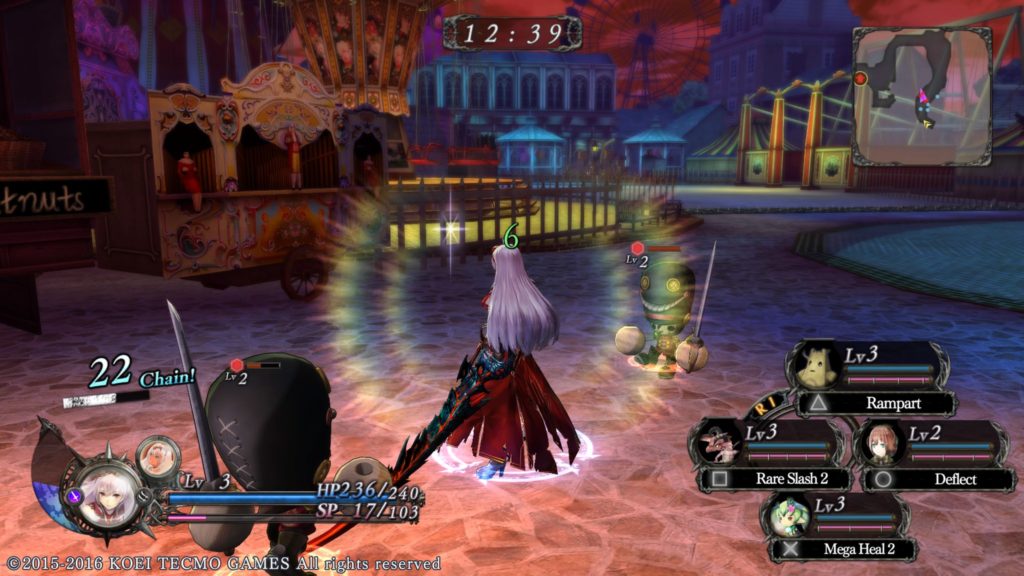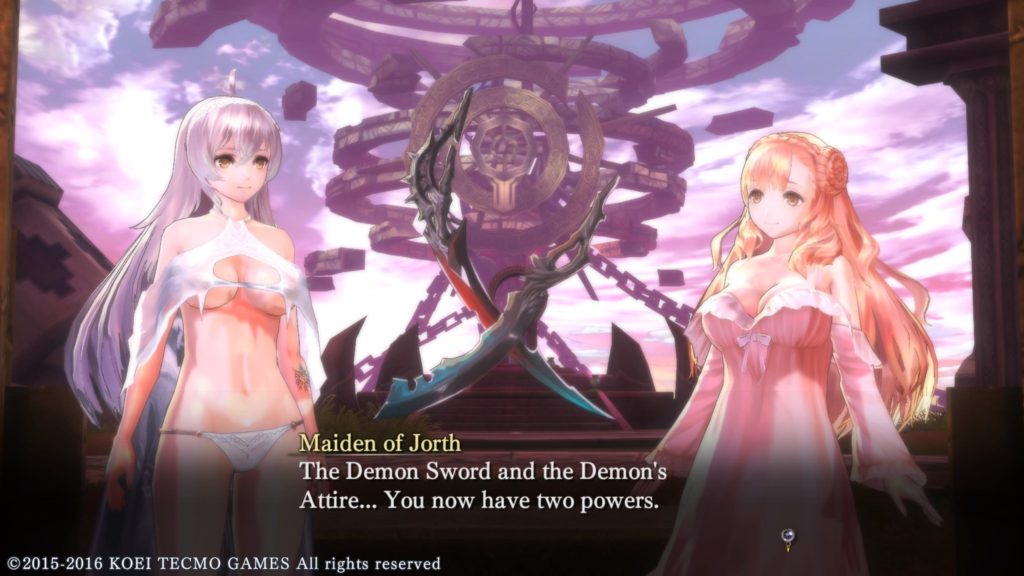- Genre: ARPG
- Platform: PS4
- Also Available On: Windows, Japan Only – PS3, Vita
TL;DR
- Solid combat with multiple fighting styles
- Good exploration mechanics that encourage taking risks without huge penalties
- Small demon collection aspect that ends up giving a lot of party flexibility, adding good depth to combat
Nights of Azure is one of those games that I can best describe as being entirely competent. It’s a game with solid combat, an entertaining enough story, and some nice systems to flesh things out. It ends quick enough that it doesn’t wear out its welcome, and in doing so doesn’t do anything egregious to piss me off. The visuals were decent, and it was clear what was going on. The soundtrack hit the emotional notes of the story’s current progress, and the battle music kicked into high gear when necessary. Given it was developed by Gust, this should come as no great surprise. The DNA of their other more famous series (Atelier series, Ar Tonelico/Nosurge series) is definitely in place here, and the game benefits a lot from it.

Being an ARPG, the most important thing in general is going to be the combat, and Azure definitely brings some solid combat to this. In a lot of ways it can be described as a sort of Tales-lite system. You’ve got a small party, some core melee combos, and some SP-based skills. However, the party members revolve around a Pokemon style collection system instead of being core NPCs. The other main thing that adds a lot of depth is that there are 4 different combat styles, giving some flexibility in picking the style that works best for the user.
However, the best thing that came out of all of this is the leveling system. While it’s definitely a consequence of the game’s short length (< 20 hours for the core story), I ended up finishing the game around level 8, and my demons at their max level of 10. Because of this, getting a level felt extremely important. Each stat bump that came with it, as well as skills gained from leveling all had an obvious impact on my character, which is a nice change from the usual 50+ level slog of more high budget ARPGs and JRPGs. The resource used for leveling was also a nice touch. Killing enemies results in Blue Blood being gained, which can be used for leveling, summoning new demons for your party, as well as purchasing items from demon vendors throughout the game. This gave a lot more consequence to the use of the resource, particularly because you could not use the blood you gained until you returned back to home base.
While that last note may sound scary, the game has other systems in place to encourage exploration, rather than making the resource gathering feel like a huge risk. The main bonus here is that you can teleport instantly back to base at any point, and most quests also typically teleport you back to base for story reasons after finishing the goal. The second thing they do is checkpoint your progress at the beginning of a room. If you die, you lose all the resources you gained specifically within the current area, but you don’t lose everything from your current exploration session, and can choose to immediately go home, or pick up where you checkpointed. In general, this allowed me to be slightly gung ho about going down side paths, because I knew at most I was only going to lose a few minutes progress, with the potential for a huge payoff defeating something optional.
I suppose my final note is that this definitely felt like a portable title, rather than a typical console title, and it being released on the Vita in Japan points to that. Exploration was done with a time limit of 15 minutes, after which you’d teleport back to base. However, I never really got close to that time limit, and the tasks I was chasing were typically done within a 10 minute or less window. This would have been a perfect amount of time for a typical portable experience, and the sequel being aimed at the Switch leads me to believe they’re sticking with the system. However, even on console the game loop there worked pretty effectively, letting me jump in in short bursts.

In a lot of ways, this was definitely a very typical Gust title. The plot was very female-focused, the interaction between the two main characters was personal and positive, and the end of the game left it open for the since-announced sequel. The outfit choices in some of the cutscenes (as seen above) were also generally pretty hilarious in how little was being worn. However, it was more often than not hilarious in its lack of care, rather than being risque or offensive in any way. End of the day, this was a game that was a lot of fun to play, even if it’s not chasing the AAA titles for game of the year.
